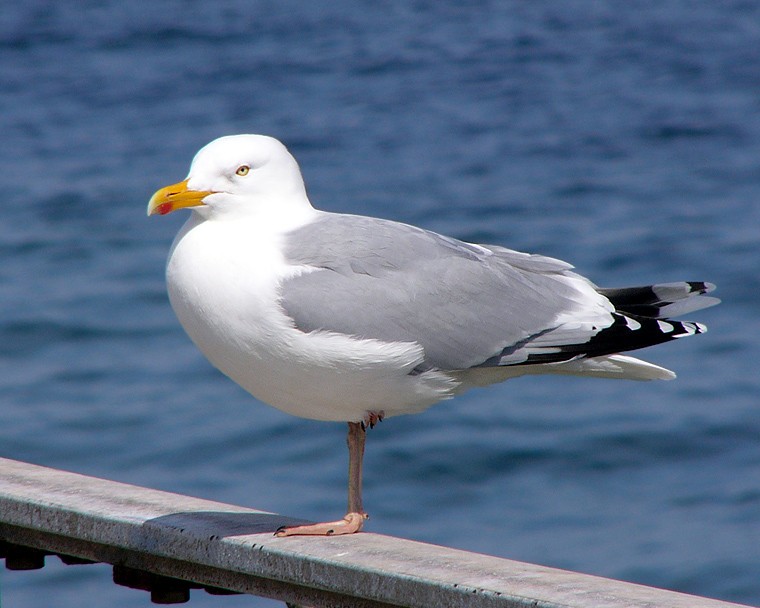Herring Gull
A species of Gulls Scientific name : Larus argentatus Genus : Gulls
Herring Gull, A species of Gulls
Botanical name: Larus argentatus
Genus: Gulls
Content
Description People often ask General Info
 Photo By Andreas Trepte , used under CC-BY-SA-2.5 /Cropped and compressed from original
Photo By Andreas Trepte , used under CC-BY-SA-2.5 /Cropped and compressed from original Description
The herring Gull is a large common seabird often found on and near coastlines. These birds nest in colonies and create a hierarchy. They may travel considerable distances for food, which usually comes in the form of fish, insects, and other small invertebrates. Surprisingly, the herring Gull can live to be 30 years old, but is often injured or even poisoned before then.
Size
56 - 66 cm
Life Expectancy
31 years
Nest Placement
Ground
Clutch Size
1 - 3 eggs
Incubation Period
1 brood
Number of Broods
31 - 32 days
Nestling Period
45 - 50 days
Feeding Habits
Herring Gull are omnivorous, preying on marine invertebrates, fish, and smaller birds, including eggs and young of other gulls. They scavenge on fish, carrion, and trash, with diet specialization common, preferring marine organisms despite fish being most nutritious. Opportunistic, they feed on agricultural fields and urban waste, including landfills, and occasionally consume plant material.
Habitat
Herring Gull's natural habitats are predominantly coastal and marine environments, but they also adapt to temperate and urban areas. Favoring open landscapes near water, they often reside near seas, lakes, and ponds. Typically found at sea level, herring Gull also inhabit terrestrial zones and exploit human-dominated spaces like landfills or agricultural fields, which offer abundant food. Breeding occurs in predator-free secluded spots, including islands and rooftops that simulate natural isolated settings.
Nest Behavior
Herring Gull build multiple scrapes before egg-laying, choosing the final nest site collaboratively. They continue to add lining throughout the month-long incubation. Both parents engage in nesting duties, with egg-laying patterns typically resulting in a clutch size specific to the species, and they jointly care for the eggs and chicks post-hatching.
Nest Characteristics
Herring Gull's nests are typically found in soft soil, sand, or vegetation, often near a rock, log, or bush for protection and concealment. Nests are about 10-15 inches across, with central depressions 4-8 inches wide, and may be lined with vegetation, feathers, or man-made materials like plastic and rope.
Dite type
Omnivorous
People often ask
General Info
Feeding Habits
Bird food type
Behavior
Herring Gull exhibit a wide array of behaviors, ranging from soaring elegantly over shorelines and open seas to aggressively scavenging near fishing boats or refuse dumps. They engage in social feeding, often dive-bombing or dipping in water for prey, and exhibit cunning by dropping shellfish onto rocks to access the meat inside. Their daily routine consists of extended periods of 'loafing' interspersed with bouts of bathing and preening. During breeding seasons, herring Gull are territorial and perform complex courtship rituals, such as mate-feeding. Pairs, which bond for life, share responsibilities in raising their chicks, with one parent always on guard during the early stages of the offspring's life.
Distribution Area
Ireland: Copeland Bird Observatory, Co Down. Britain: Since 2009, herring gulls in the United Kingdom have been on the red list of birds of conservation concern, including County Durham. Europe: Recorded from all the coasts of Europe including the Mediterranean and occasionally inland. 